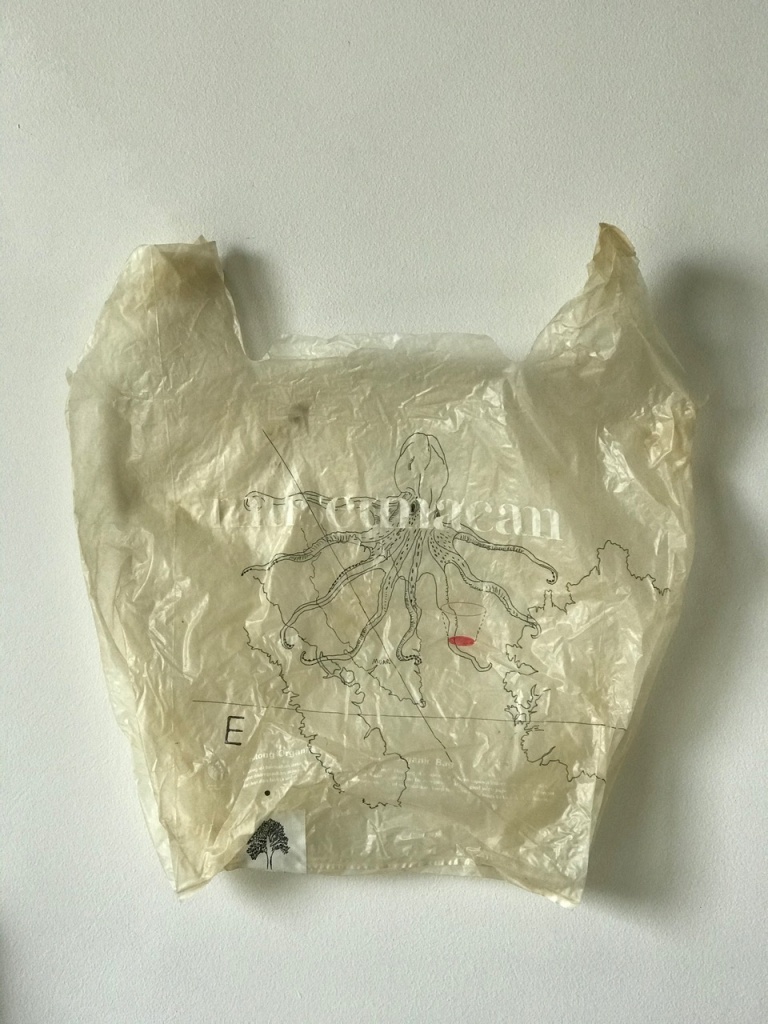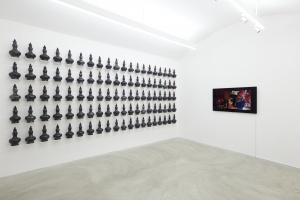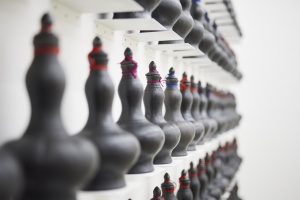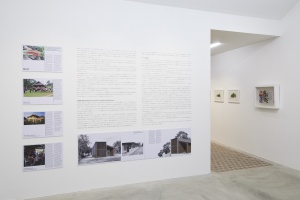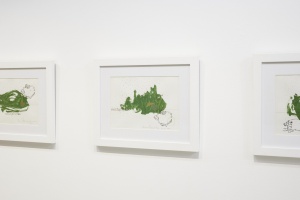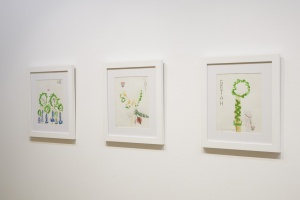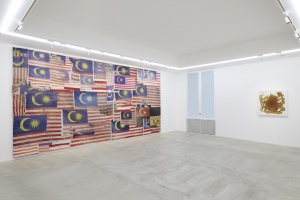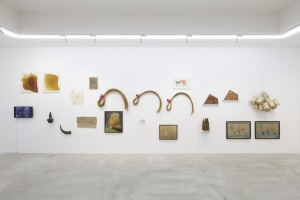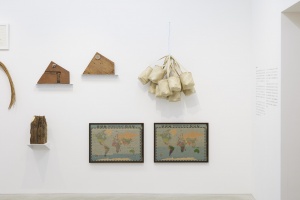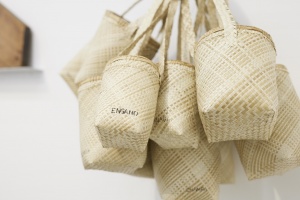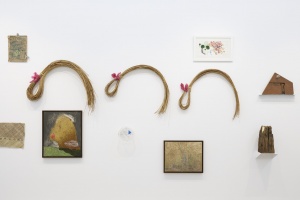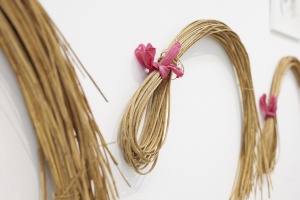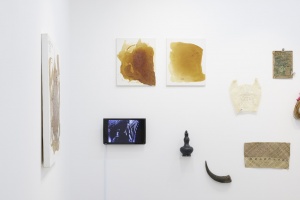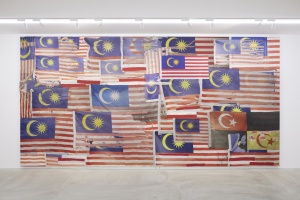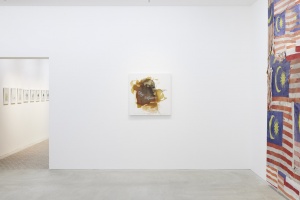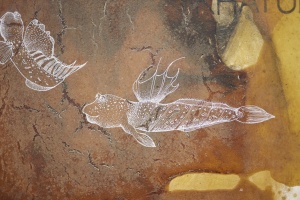Tomio Koyama Gallery is pleased to present “Lore of Equator,” a solo exhibition of works by Shooshie Sulaiman, who is recognized as one of the most important contemporary artists of Southeast Asia. The exhibition features a selection of the artist’s latest oeuvre utilizing a wide array of artistic approaches, from installation, three-dimensional works, drawings, paintings, and collages, to writing.
【Online Viewing】
Matterport by wonderstock_photo
【About Shooshie Sulaiman: Art as a means to salvage and heal oneself】
Shooshie Sulaiman was born in Malaysia in 1973. After a brief career in accounting, Shooshie began producing art as a means to “salvage and heal” herself from the feelings of loss and sorrow experienced due to the sudden death of her father. She earned her BA in Fine Art from MARA University of Technology in 1996, after which she received the National Art Gallery of Malaysia’s Young Contemporaries Award. Ever since she has continued to work widely across the globe, taking part in international exhibitions such as “Documenta 12” in 2007, and holding a solo show at the Kadist Art Foundation in Paris, France, in 2016.
Furthermore, in 2014 Shooshie set up MAIX (Malaysian Artists’ Intention Experiment), a new collective artist platform offering research, exhibition, and discussion facilities in Malaysia. Through both her personal practice and involvement with MAIX, she continues to work actively while forming communities with members across diverse fields.
In Japan Shooshie is known for her participation in numerous group exhibitions including “Emotional Drawing” (The National Museum of Modern Art Tokyo/The National Museum of Modern Art Kyoto, 2008), “SUNSHOWER Contemporary Art from Southeast Asia 1980s to Now” (The National Art Center, Tokyo x Mori Art Museum, Tokyo, 2017), “Yokohama Triennale 2017 ‘Islands, Constellations & Galapagos’” (Yokohama Museum of Art and other venues), as well as her continued participation in the artist in residence program “AIR Onomichi” (Onomichi, Hiroshima Prefecture) initiated in 2013. Shooshie is also scheduled to present a solo exhibition at the Onomichi City Museum of Art in 2023.
Her work is housed in the collections of Kadist Foundation (Paris, France), Singapore Art Museum, and the National Museum of Modern Art, Tokyo.
【About Shooshie Sulaiman’s Work: Identity, progression, and communication that bear links to the old and profound】
Shooshie describes art as that which is “inextricable with life.” Currently in Malaysia, there are rifts between various racial or ethnic groups, Shooshie, who was born to a Malaysian father and Chinese mother, had deepened her affliction and quest for her own identity. She has consequently produced works that reflect the history and origin of her homeland of Malaysia, as well as its nature and industry, and the relationship between changes in social conditions and identity.
In recent years Shooshie has shifted to a much broader perspective that concerns not only Malaysia, bringing herself to consider the means by which people’s blood ties and heritage, as well as ancient civilizations, the universe, myths, nature and handwork with connections to older and deeper things beyond the scope of specific nations, are linked to the identities of local people and communities.
From producing drawings using soil and materials specific to a certain place, only to bury them in the earth once again, to grafting a rose from a bush that grows on her late mother’s grave with roses from the gardens of Versailles, the manner in which Shooshie freely conveys her ideas regarding the themes and concepts she explores in ways that extend beyond existing categories, instill viewers with new perspectives.
Furthermore, important points in the production of Shooshie’s work is the concept of the “currently progressive” that is grounded upon the premise of change and process, dialogue and communication with people, and archives of the past.
In “AIR Onomichi,” which has continued since 2013, Shooshie examined and dismantled each and every component of the abandoned ruins of a former greengrocer’s, preserving usable materials for the production of architectural and sculptural works. Other waste materials are transformed into artworks such as paintings. Shooshie’s approach of visiting various places, engaging in conversations with people, sharing ideas, and communicating as opposed to confining herself to her studio, generates profound experiences as hands-on acts of creation. This is a crucial stance that is fundamental to both her production and thinking.
【About the Exhibition and the Featured Works: The conservation of art as a creative activity of the public sphere】
Since ancient times, the equator has harbored a mysterious potency to create connections beyond national borders. Expressing a fascination towards this curious power, Shooshie has continued to explore her knowledge of the “equator” as the landscape in which she was born and raised. This exhibition presents micro and macro perspectives, from the spiritual and abstract connections between the powers of the equator since ancient times and contemporary life, to the artist’s own spirituality and connection to her hometown.
The exhibition is largely composed of two elements: “creative activities of the public sphere” and “the artist’s own creations.” Presented in the first space of the gallery is a series of 100 “Labu Sayong” handcrafted water vessels made by traditional Malaysian techniques of pottery making. As a “creative activity of the public sphere,” such are put together under the theme of “the conservation of art,” which is a new idea that the artist has continued to explore since 2019.
“Labu Sayong” are produced through a relaxed and meditative process of seemingly engaging in a dialogue with nature and channeling one’s soul and spirit into the work. Mak Nah is the sole female ceramicist who is presently able to work with this technique. In hopes to preserve this precious tradition, Shooshie works with members of MAIX to support and provide ideas to female ceramicist Mak Nah. Video footage of the production process is also featured in the exhibition, and it is further planned that the sales of these “Labu Sayong” will be used to fund the establishment of the Labu Sayong Museum.
Shooshie has always been interested in old things and archives, and expressed hopes to “learn the movements of the past and give something back with her own hands.” For her this exhibition is a new social communication mechanism that fuses culture and tradition, and harbors her strong desire to save people in a more practical manner through the power of art.
【Ancient and Contemporary Legacies of the Equator: The artist’s own creation, the installation work “Lore of Equator”】
Presented in the next space in the gallery as the “the artist’s own creation” is the installation work “Lore of Equator,” consisting of a variety of small artworks made using traditional materials and techniques related to the equator.
Various works are placed around a line that is reminiscent of the equator. Such include, a set of 11 baskets crafted through traditional techniques that each bear the old names of Southeast Asian countries, “Macan Organic plastic bag” that features the image of an octopus and has been made from tapioca, an important plant in Southeast Asia since ancient times, a three-dimensional work of a mountain crafted from discarded pieces of wood, a painting made using the sap extracted from a rubber tree, and a map upon which countless dots are depicted in soil, among other things.
These works are based on Shooshie’s communication with the various people with whom she interacts with, such as artists and friends with traditional skills, as well as curators, and Shooshie herself describes the installation as “her own ‘myth’ that reflects both the ancient and contemporary legacies of the equator.” Various combinations of objects are scattered throughout, and their random arrangement that is at once seemingly logical yet illogical appear to emit an unexpected energy that brings them together in an intertwining fashion –as a timeless and epic narrative that is the “Lore of Equator.”
Malaysian tradition also teaches people to speak to animals and plants in order to find a deep connection between themselves and the things around them, thus reflecting a belief in the power of the energy that resides in things. Such will no doubt serve to remind us viewers of our relationship with nature, which today often seems to be forgotten or overlooked.
Mika Kuraya, the current Director of the Yokohama Museum of Art, critiques Shooshie’s work as follows:
“(Shooshie’s works) are linked to us through the universal question of who we are, and at the same time gives us a glimpse of a completely different and unfamiliar experience of what it is like to live in Malaysia.”
(Mika Kuraya, “New Collection: Shooshie Sulaiman Negara”, Museum Newsletter, Gendai no me, The National Museum of Modern Art, Tokyo, 2016).
Shooshie has remarked on Japanese people as follows:
“How do Japanese people hold spirituality and science together? Whenever I ask them this, they more often respond that they do not. They are indeed unaware (…) I felt that the Japanese maintain a certain sense of balance that people of Malay have already lost.”
(Excerpt from an interview with Shooshie Sulaiman, AIR Onomichi, 2016)
Recognizing and understanding differences is a means of reflecting on oneself, and the common points one finds there may serves as a catalyst for clarifying one’s identity.
We welcome viewers to enjoy Shooshie’s latest artistic endeavors, which aids in opening up our awareness that for time had remained closed in the midst of the pandemic.
—————————————————————————————–
For press inquiries, please contact:
press@tomiokoyamagallery.com (Makiko Okado)
—————————————————————————————–

